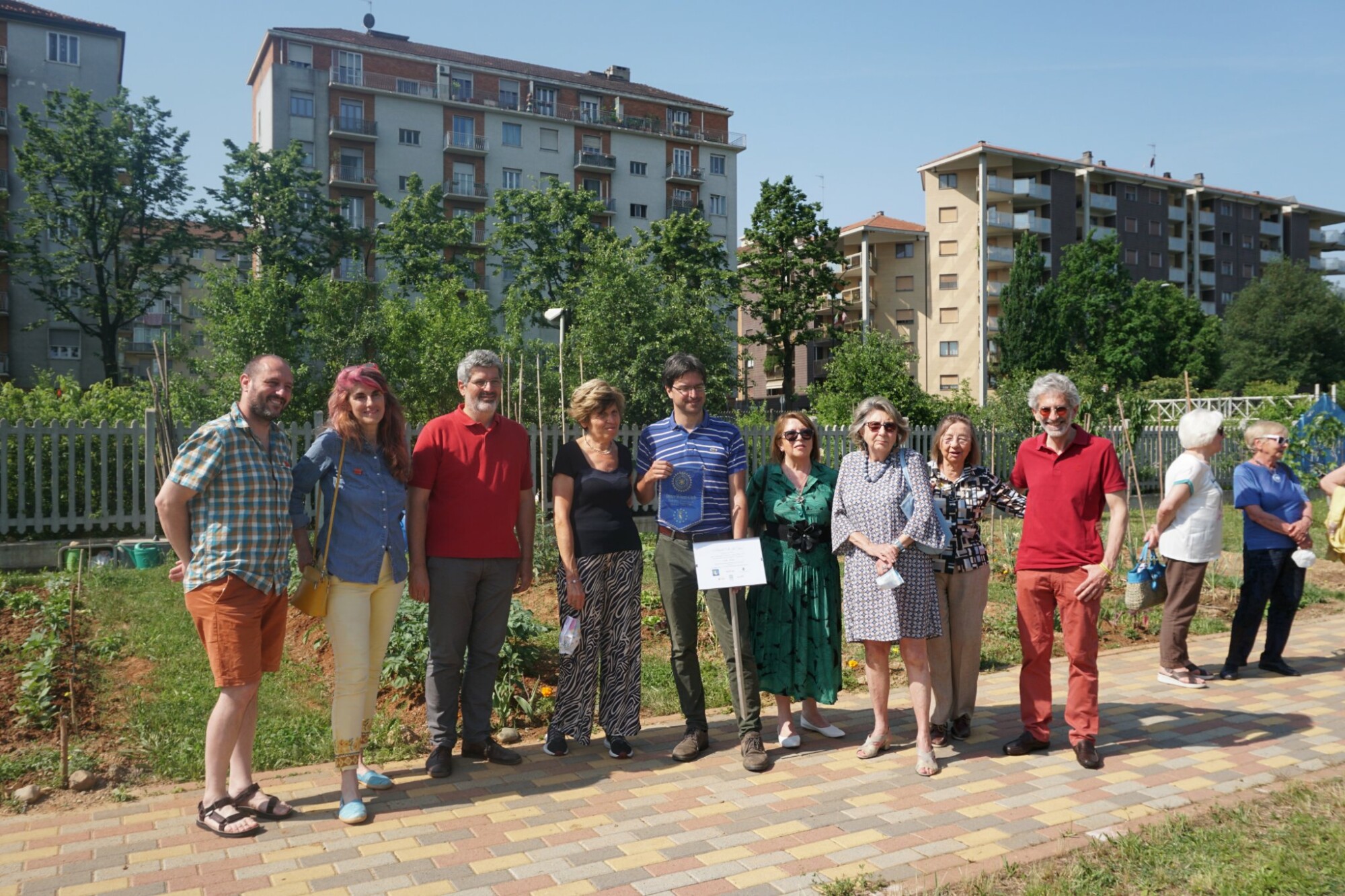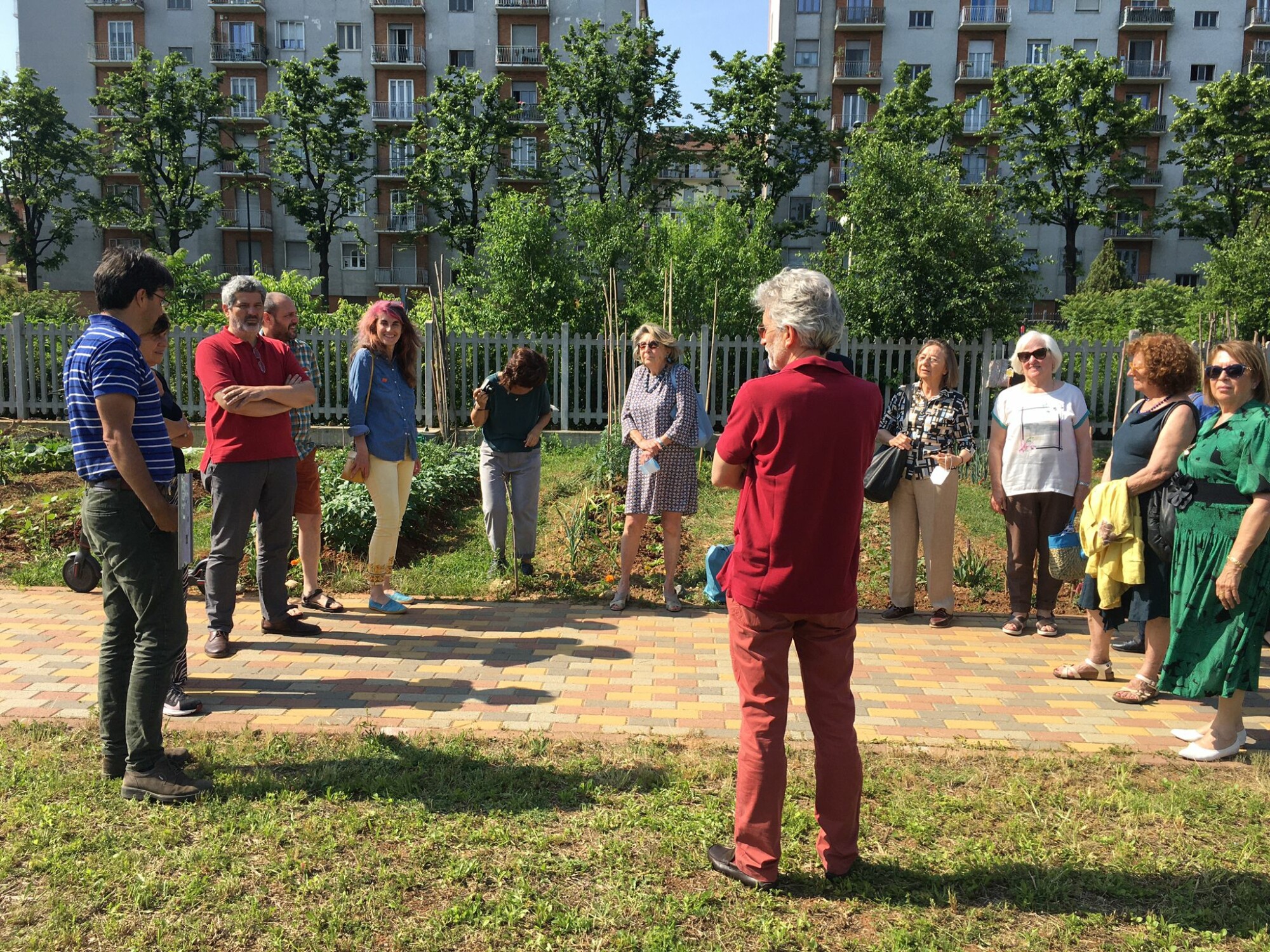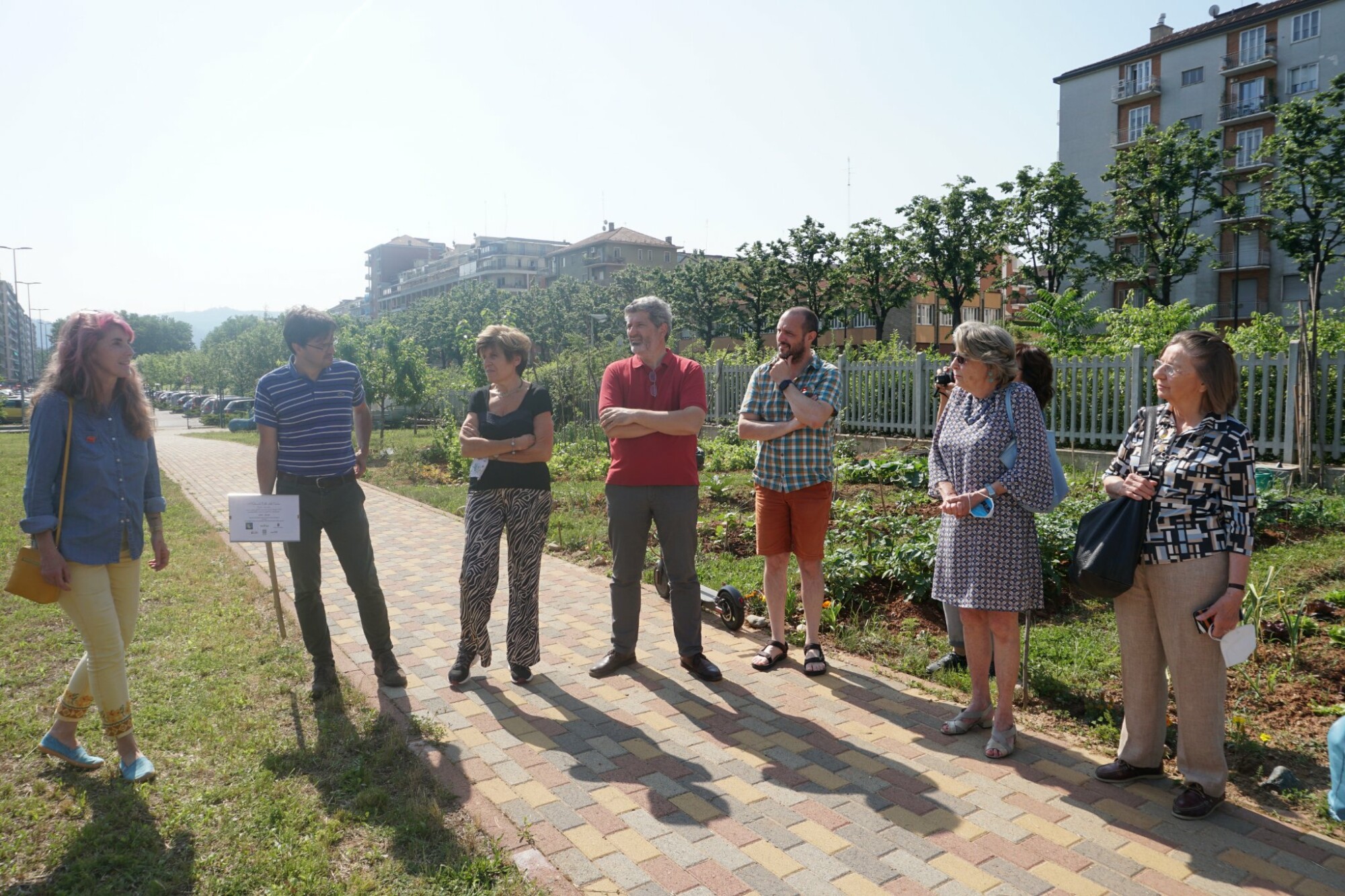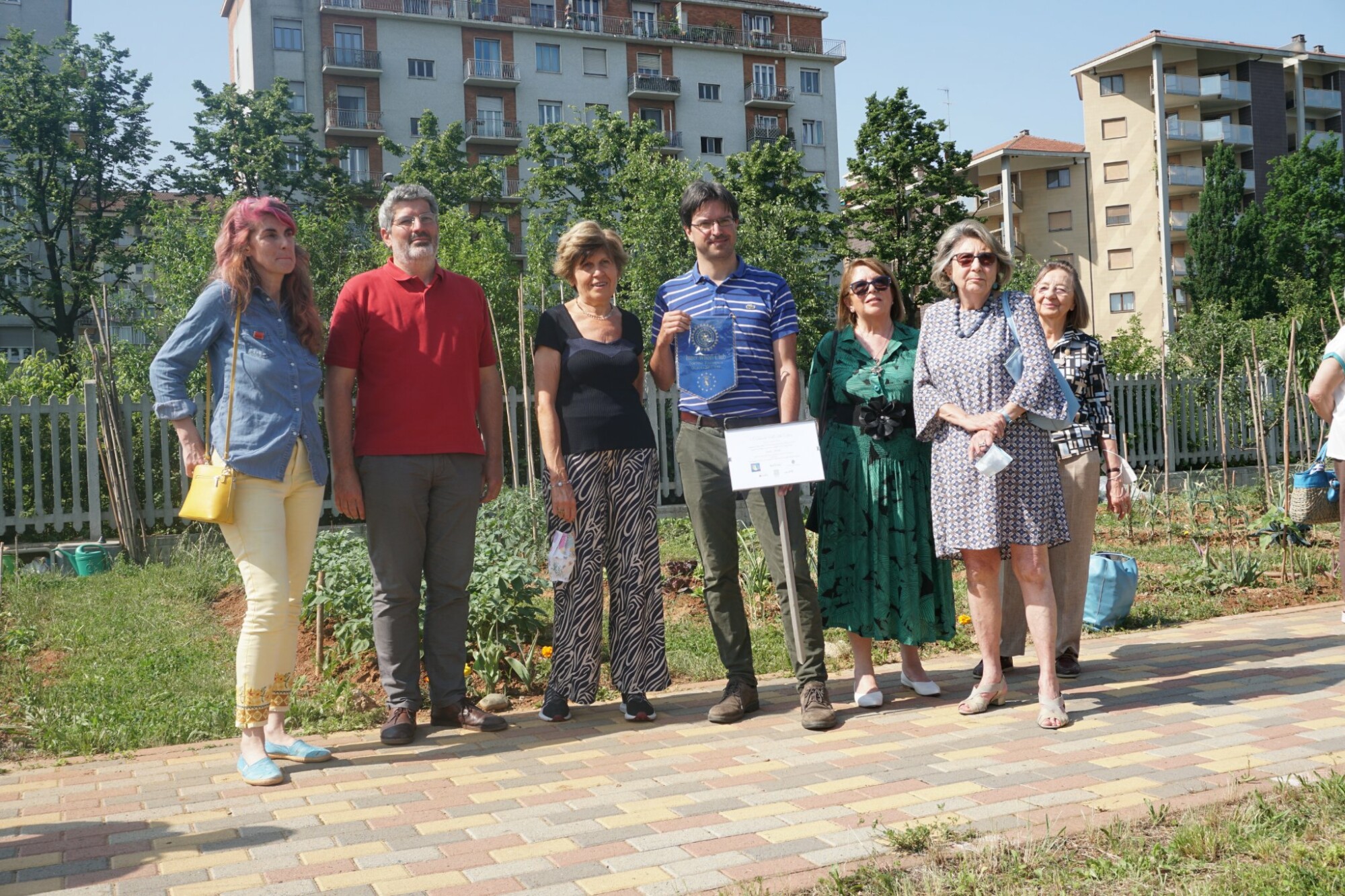At the Pietro Mennea Park in Turin:
weTree planted 3 ancient varieties of fruit trees
dedicated to Ondina Valla
On Friday, May 20, 2022, the anniversary of the birth of Trebisonda Valla, known as Ondina, a memorial plaque was placed at the Pietro Mennea Park in Turin.
In Photo No. 1: from the left, Michele Calleri, President of the Volo 2006 Association; Alessandra Aires, Vice President of the AIAPP Piemonte e Valle d’Aosta; Luca Rolandi, President of the 2nd District of the Municipality of Turin; Maria Lodovica Gullino, Professor in Plant Pathology and Director of the Agroinnova Centre of Competence at the University of Turin – spokeswoman for weTree; Vittorio Bianco, Project Manager for weTree Turin; Alda Cadorin Uberti, President of the Inner Wheel Club of Torino Europea; Dianella Fontana Savoia, President of the Club in 2020/21 (when the donation was made); Maria Paola Azzario, President of the Unesco Club of Turin; Ferruccio Capitani, President of AIAPP Piemonte e Valle d’Aosta.
Thanks to the financial contribution of the Inner Wheel Torino Europea Club Service, the weTree Association carried out the planting of three fruit trees (two apple trees and one pear tree), belonging to ancient varieties, dedicated to Ondina Valla, a hurdler and sprinter, the first Italian woman to win a gold medal at the 1936 Berlin Olympic Games.
The area where the trees were planted by weTree is the subject of a proposed Pact of Collaboration for the co-management of public space between the Municipality of Turin and the Volo 2006 association (the association of volunteers for the 2006 Turin Winter Olympics), AIAPP Piemonte e Valle d’Aosta (Italian Association of Landscape Architecture) and Educadora ONLUS.
The associations will be involved in caring for the three young trees over time.
The selection of ancient varieties of apple and pear trees is aimed at safeguarding the important biodiversity heritage consisting of the many traditional varieties of fruit trees, now largely replaced by the most popular international varieties on the market.
The Pietro Mennea Park was recently created by the Municipality of Turin on a former industrial area: it is a space reclaimed for public use and urban greenery, with new tree-lined lanes, equipment for sports activities and a vegetable garden/fruit orchard area for collective use.
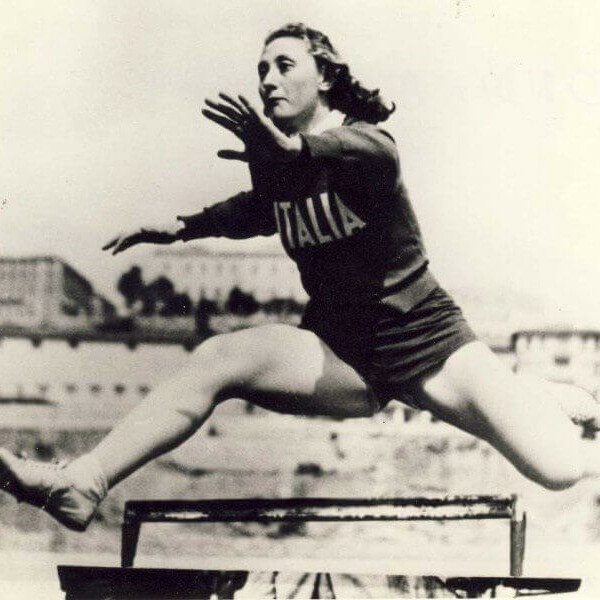
Trebisonda Valla, known as Ondina (Bologna, May 20, 1916 - L'Aquila, October 16, 2006), was an Italian hurdler and sprinter, Olympic champion in the 80-meter hurdles at the 1936 Berlin Games and the first Italian woman to ever win a gold medal at the Olympic Games.
Her original name, Trebisonda, was chosen by her father as a tribute to the Turkish town of the same name (Trabzon in Turkish), which he considered one of the most beautiful cities in the world.
Born after four male siblings, she began to be called "Ondina" as a result of an error by a journalist who wrote Trebitonda instead of Trebisonda. From then on, someone began to call her Trebit-ondina and then simply Ondina. But her parents began to call her that way only after the Olympic Games in Berlin.
Ondina Valla stood out from a very young age for her determination and athletic prowess. At the Bologna student championships, she rivaled her fellow citizen and schoolmate Claudia Testoni, who would be her antagonist throughout her athletic career, and a friend for life.
At the age of thirteen, Ondina Valla was already considered one of the great protagonists of Italian athletics. The following year she became overall Italian champion and was summoned to join the national team, when she was already wearing the colors of Virtus Atletica Bologna sports club.
Summoned for the 1932 Los Angeles Olympic Games, she was instead excluded under pressure from the Vatican, which judged it unseemly for a 16-year-old girl to undertake, as the only woman in an all-male expedition, the transoceanic journey.
She was a versatile athlete who achieved excellent results in sprinting, hurdling and jumps. She soon became a darling of the Italian public. For the Fascist government she was the ideal icon of the healthy, strong national youth. The press called her “The Sun in a Smile.”
The most important achievement of her career was the Gold Medal at the 1936 Olympic Games in Berlin in the 80-meter hurdles. On August 5, she won the semi-finals with a time of 11.6 seconds, which also earned her the world record. The next day the final was contested; the arrival was tight, with as many as four athletes swooping together across the finish line.
There was no doubt about Valla's victory, first with 11.7 seconds, but it was necessary to resort to a photo finish to establish the order of finish for the pursuers. Her lifelong rival, Claudia Testoni, found herself fourth, just out of the medal round. A few days later the two, along with Bongiovanni and Bullano, also took fourth place in the 4×100-meter relay.
The Olympic gold gave her immense popularity in Fascist Italy and made her a symbol for Italian girls.
The Berlin competition also caused the regime’s hostility to the participation of women in sports to soften, though without disappearing altogether. The government began to use women's competitions for the purpose of propaganda and to extol the strength of the "Italian race," as it was already doing for the successes of male athletes.
Moreover, with that victory Valla became, at the age of 20 years and 78 days, the youngest Italian athlete to win an Olympic gold medal, a record that remained unbeaten until 2004.
In 1937, she set the national record in the high jump with a leap of 1.56 meters, a primacy which she held until 1955, when this record was surpassed by half an inch by Paola Paternoster.
After the Olympics, Valla was forced to slow down her competitive activities because of a problem with her back, which was later revealed to be spinal spondylosis. She continued to compete until the early 1940s, earning three victories at the World University Sports Games in Tokyo and 15 national titles. In 1952, she participated in the Abruzzo championships in the shot put event, finishing second, and in the discus throw, taking first place.
After giving up competitive activities, she married Guglielmo De Lucchi, an orthopedic surgeon, and moved to L'Aquila, where she gave birth to her only son, Luigi.
In 1978, her Berlin gold medal was stolen; in 1984, Primo Nebiolo, at the time president of the Italian Athletics Federation, gave her a replica of the stolen medal.
She passed away in L'Aquila on October 16, 2006.
With financial contributions from:

In collaboration with:




Promoting Committee
Giulia Anastasia Carluccio, Prorector at the University of Turin
Patrizia Sandretto Re Rebaudengo, President of the Fondazione Sandretto Re Rebaudengo and World Ambassador of Turin's excellences
Antonella Parigi, former Councillor for Culture of the Piedmont Region
Elena Accati, former Full Professor at the University of Turin
